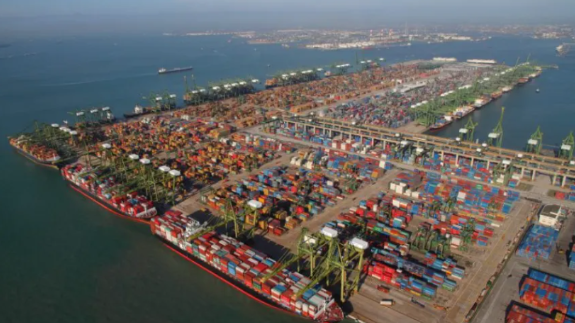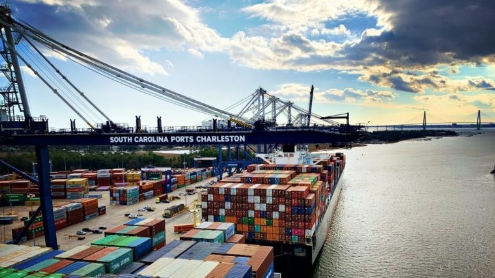A powerful 7.7-magnitude earthquake recently struck northwestern Sagaing Region, Myanmar, with aftershocks impacting Bangkok, Thailand, and neighboring countries, resulting in casualties and building collapses. While supply chains have yet to face catastrophic disruption, the logistics sector is on high alert: Bangkok’s two major cargo hubs—Suvarnabhumi Airport (BKK) and Don Mueang Airport (DMK)—are experiencing severe delays, with over 40% of flights postponed and average delays stretching to 45–68 minutes. The ripple effects have extended to regional airports, including Da Nang (Vietnam) and Penang (Malaysia).
Air Cargo Gridlock: Bangkok’s Twin Airports in "Delay Blackhole"
As Southeast Asia’s largest air-sea transit hub, Suvarnabhumi Airport (BKK) reported 47% of outbound flights delayed (avg. 45 minutes), with five cancellations. Don Mueang Airport (DMK), closer to the epicenter, saw delays spike to a "Level 5.0" risk rating (highest), averaging 70 minutes—a yearly record—while 46% of flights faced queuing bottlenecks. Regional airports in Da Nang, Surabaya (Indonesia), Penang, and Kuala Lumpur are also grappling with backlogs, potentially delaying air freight by 24–48 hours. While AirAsia maintains scheduled flights, Myanmar National Airlines has slashed capacity, grounding select routes.
Land Logistics Time Bomb: China-Myanmar Energy Corridor Under Threat
The earthquake’s epicenter lies near Myanmar’s Sagaing Region, a critical juncture for the 771-km China-Myanmar oil/gas pipeline—a lifeline carrying 30% of China’s Middle East crude imports and a cornerstone of the Belt and Road Initiative. No pipeline damage has been reported, but landslides from aftershocks have blocked highways, reducing trucking efficiency in Myanmar by 40%. Xeneta warns that prolonged inland disruptions (>72 hours) could cripple Myanmar’s role as a China-Southeast Asia land bridge, spiking cross-border trucking costs by 20–30% and amplifying regional supply chain strain.
Supply Chain "Aftershocks": Manufacturing and Price Volatility Risks
"Logistics impacts from earthquakes often emerge later," notes Lars Jensen, CEO of Vespucci Maritime. While Myanmar isn’t a global manufacturing hub, its garment and agricultural export clusters near the quake zone face factory shutdowns, threatening EU retailers’ autumn-winter orders. Thailand, a key producer of hard drives and auto parts, may see forced shifts to costlier ground transport for delicate components like chips due to airport delays. Xeneta adds that post-disaster rebuilding could trigger a scramble for construction/medical supplies, pushing up regional shipping rates by 15% within a week.
Freight Industry’s Emergency Playbook: Multimodal Transport as the Key
Experts propose a three-tier response to mitigate supply chain fractures:
- Short-term: Divert Bangkok-stranded cargo via alternate hubs (e.g., Singapore Changi, Hong Kong); reroute Myanmar-bound trucks away from landslide zones.
- Mid-term: Explore rail alternatives like the China-Laos Railway (Kunming-Vientiane) for Myanmar-Thailand border crossings.
- Long-term resilience: Adopt "multi-modal insurance" and secure contracts with carriers offering diversified transport options.
"Over-reliance on single routes is a fatal flaw," warns Xeneta, urging shippers to audit "Myanmar-linked nodes," activate dual-supplier/dual-route plans for time-sensitive goods (e.g., electronics, perishables), and monitor port/airport disruptions via real-time logistics platforms to minimize losses.
Natural disasters are unpredictable, but supply chain resilience isn’t accidental. From rapid response to strategic overhauls, the global logistics sector is racing against seismic shocks to rewrite its survival playbook.

Last
Monsoon Havoc: Severe Congestion Hits Key SE Asian Ports as Singapore and Klang Face 3-Day Delays
Southeast Asia is currently experiencing unusually intense monsoon conditions, with nearly a week of torrential rains causing sign

Next
U.S. Farmers, Dockworkers, and Shipowners Unite Against Proposed Fee on Chinese Vessels
A recent article onThe Wall Street Journalwebsite highlights growing opposition from American farmers, longshoremen, and shipping




